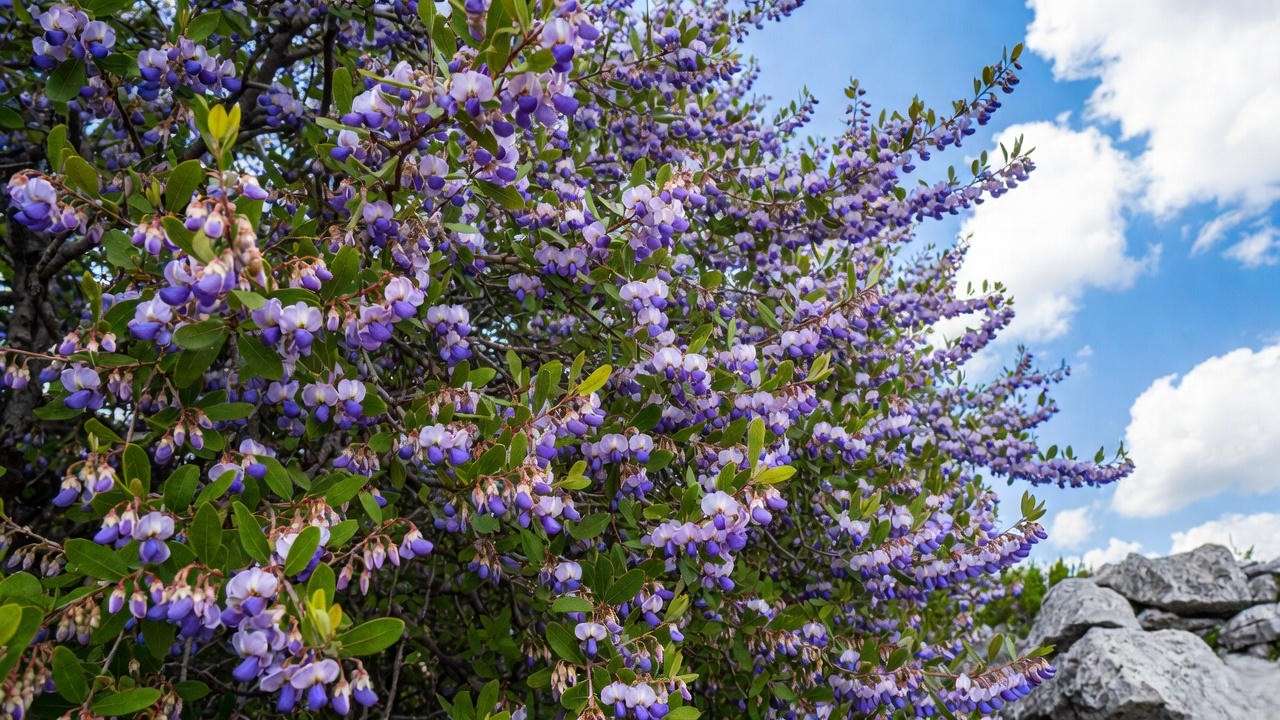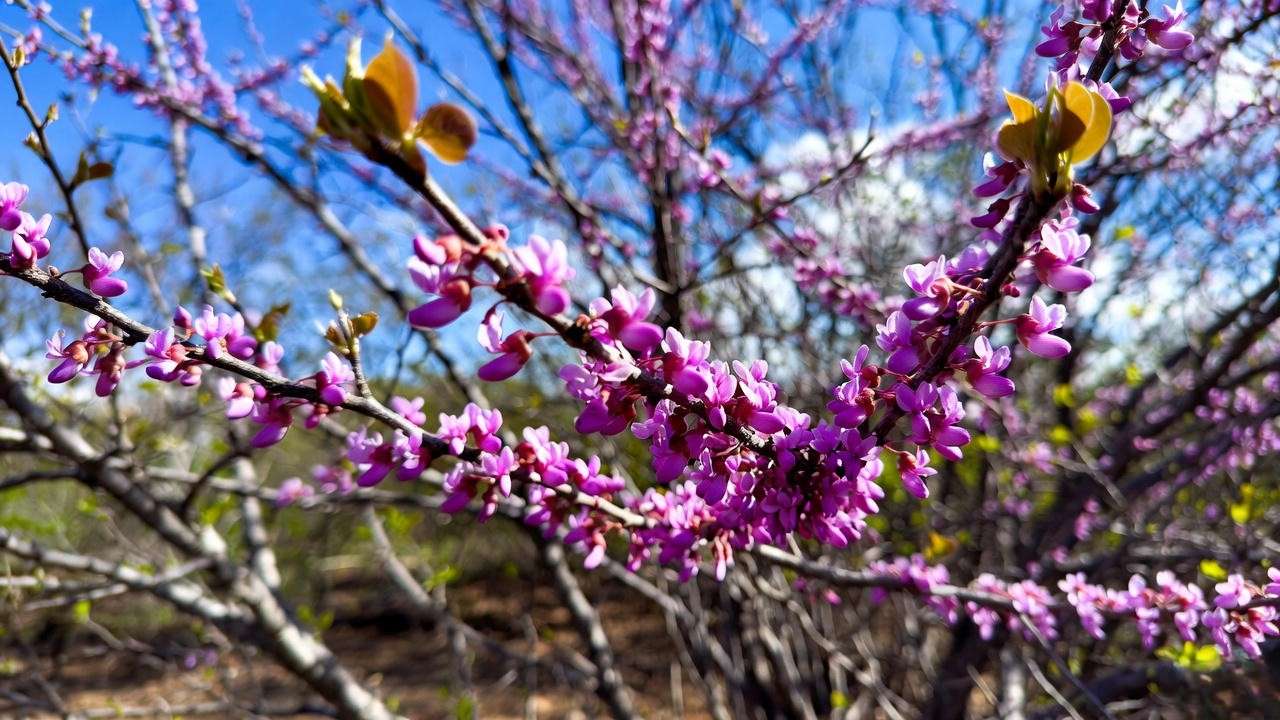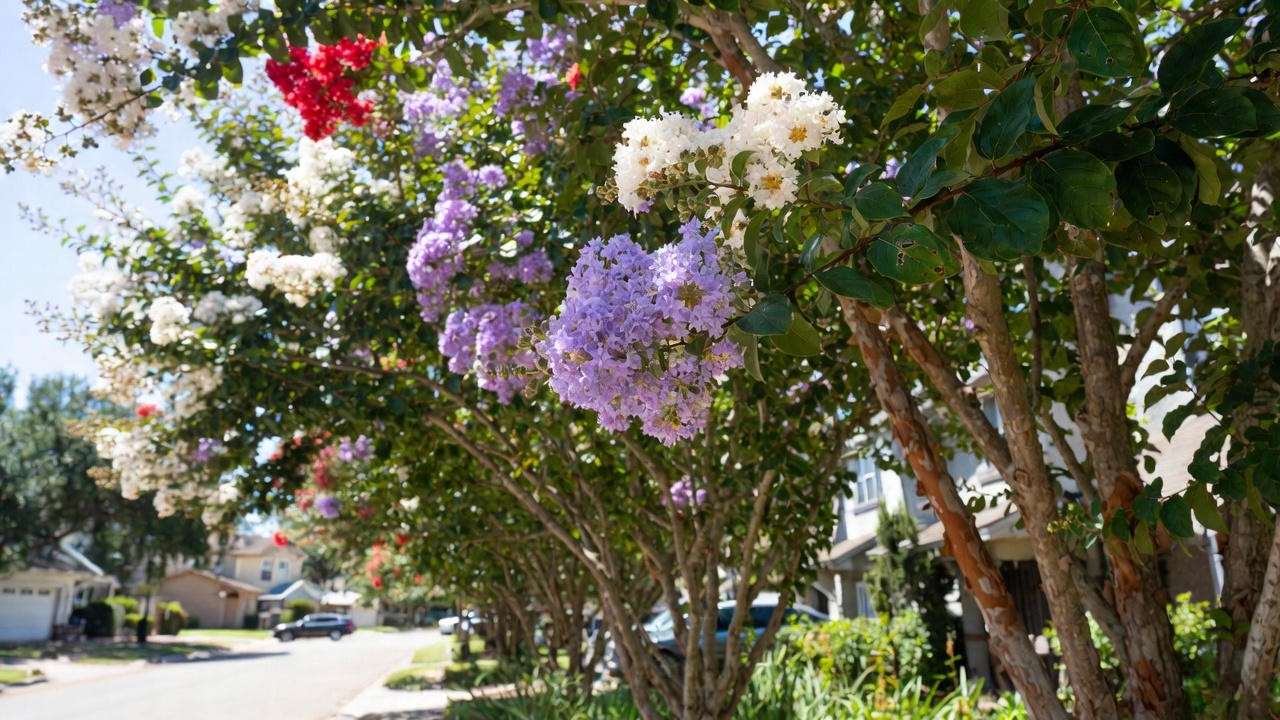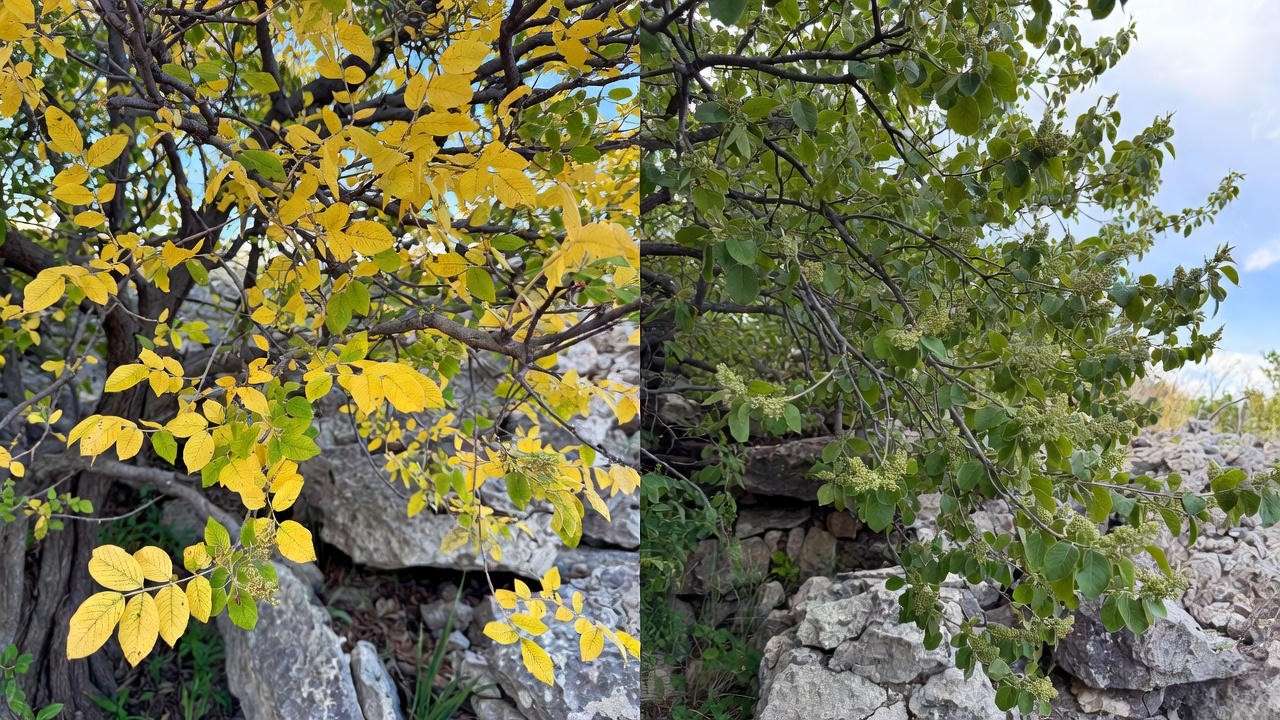Imagine walking barefoot across your Texas lawn on a scorching 105°F July afternoon… and suddenly being surrounded by a riot of purple, pink, and white blooms that look like they belong in a magazine — not a state famous for triple-digit heat, drought, and rock-hard clay soil. That dream yard is 100% possible, even in Austin, Dallas, Houston, San Antonio, or the Panhandle. The secret? Choosing the right flowering trees in Texas — the tough, gorgeous ones that actually laugh at our climate instead of wilting after one summer.
I’m Lauren Crawford, a Texas-Certified Nursery Professional, Master Gardener, and former Travis County Extension horticulturist with 17 years of boots-on-the-ground experience helping thousands of homeowners stop wasting money on pretty trees that die in year two. I’ve personally planted, pruned, and rescued every tree on this list across Central Texas and beyond. Today I’m handing you the exact playbook I wish I’d had when I started.
Let’s fix the #1 mistake Texas gardeners make and get color exploding in your yard — no matter how brutal the heat gets.
Why Most Flowering Trees Fail in Texas (And How to Never Make That Mistake Again) 🌵
Texas isn’t “hard” to garden in — it’s just different. Most big-box nurseries sell the same national best-sellers that thrive in Georgia or Oregon… and watch them melt here. The “Texas Trifecta of Doom” kills 70–80% of improperly chosen trees:
- Extreme heat (100–110°F+ for weeks)
- Prolonged drought & water restrictions
- Heavy clay, caliche, or blackland prairie soils with pH 7.5–8.5
Add deer, armadillos, and alkali-loving pests, and you see why your neighbor’s dogwood or cherry tree looks sad by June.
The great news? Dozens of jaw-dropping flowering trees are native or perfectly adapted to our conditions. You just have to know which ones.
How We Chose These 15 Flowering Trees (Our Texas-Tough Criteria) ✅
Every tree on this list had to pass my real-world gauntlet (plus data from Texas A&M AgriLife research and my own client trials):
- Survives 105–115°F heat indexes
- Drought-tolerant once established (critical with Stage 2 restrictions)
- Thrives in clay, caliche, or high-pH soil without constant amendments
- Spectacular, reliable blooms (at least 4–6 weeks)
- Minimal pest/disease issues common in Texas
- Pollinator-friendly (because we love hummingbirds and butterflies too 🦋)
The 15 Best Flowering Trees for Texas Landscapes 🌳✨
1. Texas Mountain Laurel (Sophora secundiflora) 💜
The undisputed queen of Texas spring.
- Bloom: February–April clusters of intensely fragrant purple flowers that smell exactly like grape Kool-Aid
- Mature size: 15–25 ft tall × 10–15 ft wide
- Best zones: 8–10 (Hill Country, South Texas, West Texas)
- Bonus: Evergreen, deer-resistant, zero pests Pro tip: Plant it where you’ll smell the fragrance from your patio — pure magic.

2. Desert Willow (Chilopsis linearis) 🌸
Not a true willow — it’s a tough native that blooms non-stop from May to September.
- Bloom: Trumpet-shaped pink-to-burgundy flowers beloved by hummingbirds
- Size: 15–30 ft tall, graceful weeping form
- Best everywhere in Texas except deep East Texas pineywoods
- Loves heat and reflected sunlight off driveways Cultivars to look for: ‘Bubba’, ‘Lucretia Hamilton’, ‘Hope’
3. Mexican Plum (Prunus mexicana) ❄️🌸
One of the earliest native bloomers — often flowering in late February.
- Bloom: Pure white fragrant flowers before leaves appear
- Size: 15–35 ft
- Edible purple plums in summer attract birds (and kids)
- Grows wild from Dallas to San Antonio — ultimate clay-soil champ
4. Texas Redbud (Cercis canadensis var. texensis ‘Oklahoma’ & ‘Texas White’) 🌺
The classic heart-shaped leaves and magenta/pink spring show.
- ‘Oklahoma’ has the deepest magenta flowers and glossy leaves
- ‘Texas White’ is rare and stunning
- Handles blackland clay and limestone rock like a native (because it is)

5. Chaste Tree / Vitex (Vitex agnus-castus) 🦋
Blooms from June until frost — literally the longest flowering tree for Texas.
- Lavender-blue spikes attract butterflies non-stop
- Size: 10–20 ft (can be kept smaller with pruning)
- Tolerates the worst heat and poorest soil My personal favorite for instant pollinator parties.
6. Crape Myrtle (Lagerstroemia hybrids) – The Texas State Shrub (That Acts Like a Tree)
Yes, everyone has one — but most people plant the wrong varieties or butcher-prune them. Best Texas-tough cultivars:
- ‘Natchez’ (white, 25–30 ft, cinnamon bark)
- ‘Muskogee’ (lavender, mildew-resistant)
- ‘Tonto’ (red, semi-dwarf)
- ‘Dynamite’ (true red, 20 ft) Newer mildew-resistant series: Basham’s Party Pink, Pink Velour, Purple Magic

7. Mexican Buckeye (Ungnadia speciosa) 🌺
Underused native that should be in every Texas yard.
- Hot-pink spring flowers before leaves
- Interesting three-part seed pods
- Size: 10–20 ft multi-trunk
- Thrives in limestone rock and drought
8. Eve’s Necklace (Sophora affinis) 💗
Delicate pink flowers followed by black seed pods that look like beads on a necklace.
- Size: 15–25 ft
- Extremely drought-tolerant once established
- Perfect small patio tree
9. Flowering Crabapple – Yes, Some Actually Work Here! 🌸
Forget the old advice that crabapples can’t grow in Texas. These varieties laugh at heat and black spot:
- ‘Prairifire’ (red buds → pink flowers → persistent red fruit)
- ‘Royal Raindrops’ (purple foliage + magenta flowers)
- ‘Sugar Tyme’ (white flowers + yellow-red fruit) All rated to Zone 9 with proper care.
10. Golden Rain Tree (Koelreuteria paniculata) 💛
Mid-summer golden fireworks when everything else is tired.
- Thousands of yellow flowers in panicles → pink seed pods
- Size: 25–35 ft
- Handles urban heat and poor soil beautifully
11. Texas Smoke Tree (Cotinus obovatus) 🌸
A rare American native that out-blooms its purple-leaved cousin.
- Bloom: May–June airy pink “smoke” puffballs that glow in sunset light
- Fall color: insane orange-red-purple (best in Texas!)
- Size: 20–30 ft
- Thrives in limestone hill country soils; almost never seen in big-box stores — plant one and be the envy of the neighborhood.
12. Anaqua / Knockaway (Ehretia anacua) 🌼
South Texas & Coastal secret weapon.
- Fragrant creamy-white flowers spring through fall + sweet yellow fruit birds love
- Evergreen in Zones 9–10
- Size: 20–40 ft
- Salt-tolerant — perfect for Corpus Christi or the Valley
13. Mexican Olive (Cordia boissieri) 🤍
The “Texas olive” that actually blooms.
- Large white trumpet flowers with yellow throats nearly year-round in deep South Texas
- Evergreen foliage, drought-proof
- Size: 15–25 ft
- Hummingbird and butterfly favorite
14. Retama / Jerusalem Thorn / Palo Verde (Parkinsonia aculeata) 💛
Feathery desert elegance with non-stop yellow blooms.
- Blooms heaviest after monsoon rains, but flowers sporadically all summer
- Size: 15–30 ft, green bark photosynthesizes when leaves drop
- Perfect for xeriscapes in West Texas and the Trans-Pecos
15. Possumhaw Holly (Ilex decidua) ❤️
The winter-flowering surprise every Texas yard needs.
- Deciduous — drops leaves in fall to reveal thousands of brilliant red berries that last until February
- Native from East Texas to the Hill Country
- Size: 10–20 ft (multi-trunk shrub or small tree)
- Female plants need a male nearby for berries (one ‘Warren’s Red’ male pollinates 10+ females)
At-a-Glance Comparison Table – Pick Your Perfect Tree 📊
| Tree | Bloom Color | Max Height | Drought Rating | Best Texas Region | Standout Feature |
|---|---|---|---|---|---|
| Texas Mountain Laurel | Purple | 25 ft | ★★★★★ | Central/South/West | Grape fragrance |
| Desert Willow | Pink/Burgundy | 30 ft | ★★★★★ | Statewide except E TX | Hummingbirds go crazy |
| Mexican Plum | White | 35 ft | ★★★★ | North/Central | Earliest bloomer + edible fruit |
| Texas Redbud | Magenta/White | 20 ft | ★★★★ | Statewide | Native clay-soil champ |
| Chaste Tree (Vitex) | Lavender | 20 ft | ★★★★★ | Statewide | Longest bloom period |
| Crape Myrtle (best cvs) | White-Pink-Red | 6–30 ft | ★★★★ | Statewide | Summer color king |
| Mexican Buckeye | Hot Pink | 20 ft | ★★★★★ | Central/West | Underused native gem |
| Eve’s Necklace | Pink | 25 ft | ★★★★★ | Central/North | Beaded seed pods |
| Flowering Crabapple | Pink/White | 20 ft | ★★★ | North/Central (protected) | Four-season interest |
| Golden Rain Tree | Yellow | 35 ft | ★★★★ | Statewide | July fireworks |
| Texas Smoke Tree | Smoky Pink | 30 ft | ★★★★★ | Central/West | Best fall color in Texas |
| Anaqua | Creamy White | 40 ft | ★★★★★ | South/Coastal | Evergreen + fruit |
| Mexican Olive | White | 25 ft | ★★★★★ | Deep South | Year-round blooms |
| Retama | Yellow | 30 ft | ★★★★★ | West/Southwest | Green bark desert look |
| Possumhaw Holly | Red berries (winter) | 20 ft | ★★★★ | Statewide | Winter color when everything’s dead |
Complete Planting Guide for Flowering Trees in Texas 🏡
When to Plant – Fall Is KING (September–November)
Texas heat in spring + summer stresses new trees. Planting in fall gives roots 6–8 months to establish before the next inferno. Second-best window: February–early March.
The “No-Dig” Raised Planting Method Texas Pros Swear By
- Do NOT dig a hole in heavy clay — it becomes a bathtub.
- Build a 3–4 ft wide berm 6–8 inches high with 70% native soil + 30% quality compost.
- Plant so root flare sits 1–2 inches ABOVE surrounding grade.
- Mulch 3–4 inches deep, but keep it 6 inches away from trunk.
Watering Schedule First Two Years (Critical!)
- Week 1–4: 15–20 gallons 2–3× per week
- Month 2–12: Deep water once every 7–10 days (more if 100°F+)
- Year 2 summer: Once every 10–14 days
- Year 3+: Only during extreme drought
Pro trick: Use a tree watering ring or slow drip for 4–6 hours — surface sprinkling does almost nothing in clay.

Year-Round Care Calendar for Texas Flowering Trees 📅
January–February
- Prune crape myrtles, redbuds, plums (before buds swell)
- Apply horticultural oil for scale on mountain laurel
March–April
- Fertilize with slow-release 15-5-10 or organic for alkaline soils
- Treat chlorosis with sulfur + iron chelate if needed
May–August
- Deep water during triple-digit stretches
- Watch for webworms (Bt spray is safe & effective)
- Deadhead vitex and desert willow for rebloom
September–October
- Best planting months!
- Root-stimulator drench for new trees
November–December
- Wrap young trunks with tree wrap to prevent sunscald
- Enjoy possumhaw berries and mountain laurel seed pods
Common Problems & How to Fix Them Fast 🛠️
Yellow leaves (chlorosis) → High pH locks up iron. Fix: Soil sulfur + chelated iron + Texas greensand every spring.
Powdery mildew on crape myrtles → Choose resistant cultivars (Muskogee, Natchez, etc.) and avoid overhead watering.
Aphids & webworms → Strong stream of water + ladybugs or Bt (safe for pollinators).
Deer browsing → Texas mountain laurel, vitex, and desert willow are naturally deer-resistant. For others, use Liquid Fence or cage young trees first 3 years.

Design Ideas – Real Texas Yards That Turn Heads 🏡
- Small urban lot? → Chaste tree + Eve’s necklace + Mexican buckeye in containers
- Privacy screen that blooms → Row of ‘Natchez’ crape myrtles underplanted with retama
- Pollinator paradise → Desert willow + vitex + Texas mountain laurel triangle
- Front-yard specimen → Texas smoke tree centered with red yucca and blackfoot daisy
Expert Q&A – Real Questions I Get Every Week in Texas 💬
Q: “Will a regular Eastern redbud survive DFW clay?” A: Only ‘Texas White’ or ‘Oklahoma’ — the straight species usually dies by year three.
Q: “Can I grow a Japanese maple in Houston?” A: You’ll fight it forever. Pick desert willow or vitex instead — same vibe, zero drama.
Q: “What’s the lowest-maintenance flowering tree?” A: Once established, desert willow or retama — I’ve seen 20-year-old specimens never watered.
Frequently Asked Questions (FAQ) ❓
What is the most drought-tolerant flowering tree in Texas? Desert willow and Texas mountain laurel — both survive on rainfall alone after year two.
Which flowering tree blooms the longest in Texas heat? Chaste tree (Vitex) — June through first frost, easily 4–5 months.
Are there native flowering trees that stay under 15 feet? Yes! Mexican buckeye, Eve’s necklace, and possumhaw holly all max out 10–15 ft with pruning.
Can I grow a flowering dogwood in Texas? 99% no. Even ‘Appalachian Spring’ struggles south of Zone 7b. Choose Texas redbud instead — same look, actually lives.
Final Thoughts 🌟
Your Texas yard doesn’t have to be a brown, prickly cactus-scape. With these 15 battle-tested flowering trees, you can have magazine-worthy color spring through winter — while your water bill stays low and your neighbors ask, “How did you do that?!”
My top 3 for beginners:
- Chaste Tree (Vitex) — impossible to kill and blooms forever
- Desert Willow — hummingbird magnet
- ‘Natchez’ Crape Myrtle — classic Texas beauty done right
Drop your city or county in the comments and I’ll tell you my personal #1 pick for your exact soil and microclimate (I answer every single one).
Happy planting, y’all — let’s make Texas even prettier, one blooming tree at a time! 🌳❤️













